Essential Hardware Enhancements in Apple's New M2 MacBook Pros
Written on
Chapter 1: Introduction to Apple's Latest Releases
Apple surprised the tech community with the unexpected launch of the new M2 14” and 16” MacBook Pros, along with the innovative M2 Pro Mac mini.
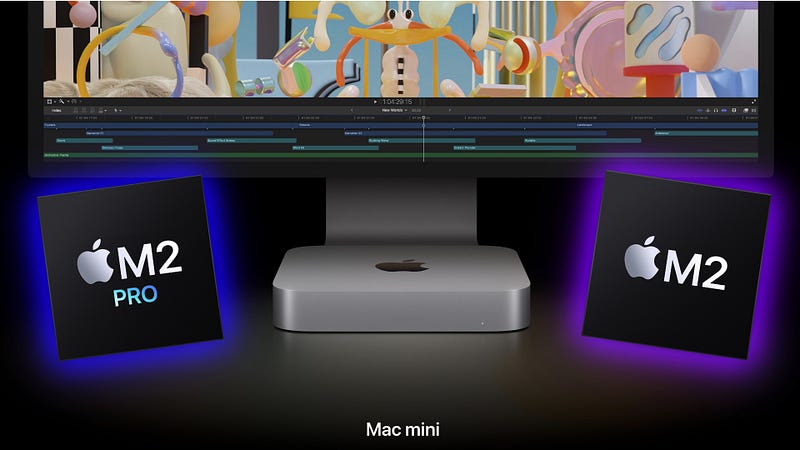
Source: Apple | The M2 Pro Mac mini enhances my media production setup.
For those who regularly follow Apple news, the unveiling of these latest devices may not have been a shock. However, if you're not deeply invested in the rumors, it might have seemed quite sudden. How often does Apple announce two major product updates in early January without a major launch event?

Source: Apple | Experience the stunning Final Cut Pro timeline on the Studio Display!
Indeed, times are changing, and Apple has introduced the next-generation M2 chip, featuring both M2 Pro and M2 Max options in the 14” and 16” MacBook Pros, along with the Mac mini (only M2 Pro variant). This advancement in Apple’s silicon technology promises enhanced performance, enabling professionals to elevate their photography, filmmaking, and animation projects.
We can expect a wave of YouTube content comparing the M1 Pro to the M2 Pro, and the M2 Max to the M1 Max. While there will likely be notable performance gains, they may not be as groundbreaking as the transition from Intel chips to the M1.
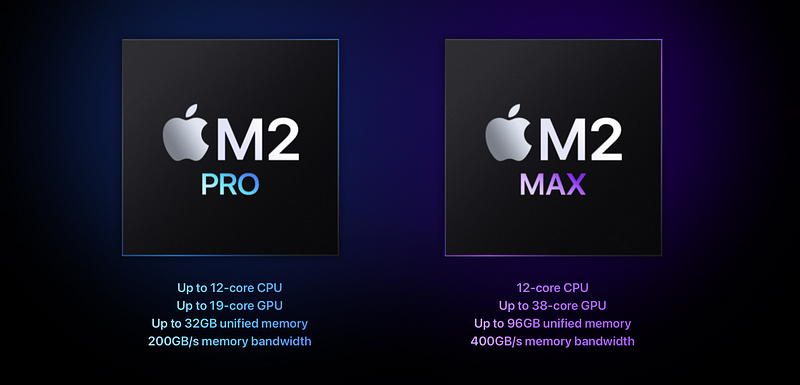
Source: Apple | The evolution to the second-generation M2 Pro & M2 Max Chips is astounding!
I’m still amazed by the difference in video export times between my 2013 quad-core Mac Pro and my 14” M1 Pro MacBook Pro. However, what truly captured my attention with these new devices were three significant hardware updates that could have a more profound effect on the daily experiences of creative professionals than the new System on a Chip (SoC) architecture.
What are these essential hardware upgrades?
- Bluetooth 5.3
- HDMI 2.1
- Wi-Fi 6E
Let’s delve into the benefits of each upgrade to understand their importance.
Section 1.1: Understanding Bluetooth 5.3
Bluetooth 5.3 brings several advantages, including reduced power consumption, minimized interference, and enhanced connection security. Instead of delving into technical jargon, let’s focus on its practical implications for your Apple devices.
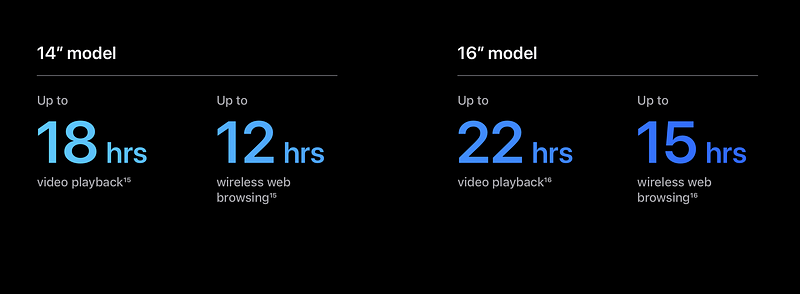
Source: Apple | Experience an impressive 22 hours of video playback on the 16" MacBook Pro!
If you own AirPods Pro 2, you're already utilizing Bluetooth 5.3. This means that when you connect them to your new Mac for music, videos, or shows like Yellowstone, you'll benefit from extended battery life, reduced interference from other Bluetooth devices, and fortified encryption for enhanced security.
Currently, only the AirPods Pro 2 utilize Bluetooth 5.3, while the AirPods 2nd and 3rd generations and AirPods Max are still on Bluetooth 5.0.
Section 1.2: The Advantages of HDMI 2.1
HDMI 2.1, which debuted back in 2017, has slowly gained traction in the tech world. With gaming consoles and PCs leading the way, HDMI 2.1 became essential for delivering HDR and VRR (Variable Refresh Rate) content at 4K 120Hz—no small feat.
HDMI 2.1 supports a data transfer rate of 48Gb/s, a significant leap from the 18Gb/s offered by HDMI 2.0. This upgrade also includes features like standardized VRR and Auto Low Latency Mode (ALLM), ensuring gamers experience minimal input lag.
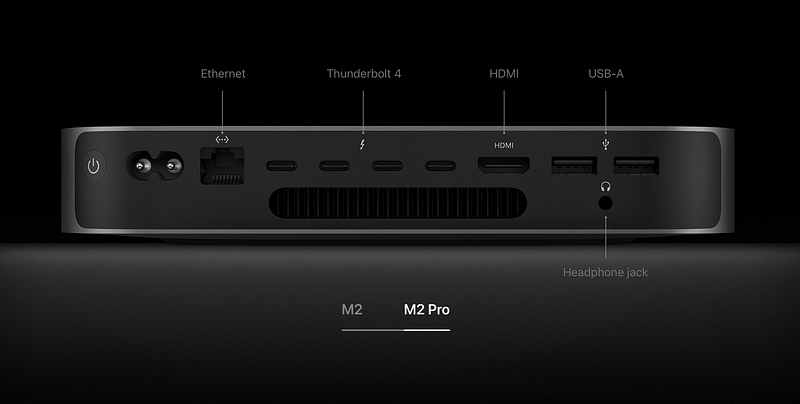
Source: Apple | The M2 Pro Mac mini now features HDMI 2.1!
Another notable feature of HDMI 2.1 is “dynamic HDR,” which adjusts brightness, color, and contrast based on the displayed content—an impressive upgrade from HDMI 2.0’s “static HDR.” With this enhancement, Apple’s latest Macs can output an 8K signal via HDMI.
While not everyone will connect their Mac to an 8K display, the ability to output at resolutions above 4K 60Hz is significant. This includes 4K at 120Hz or even 240Hz, which is crucial for video editors and colorists working with high-quality HDR content.
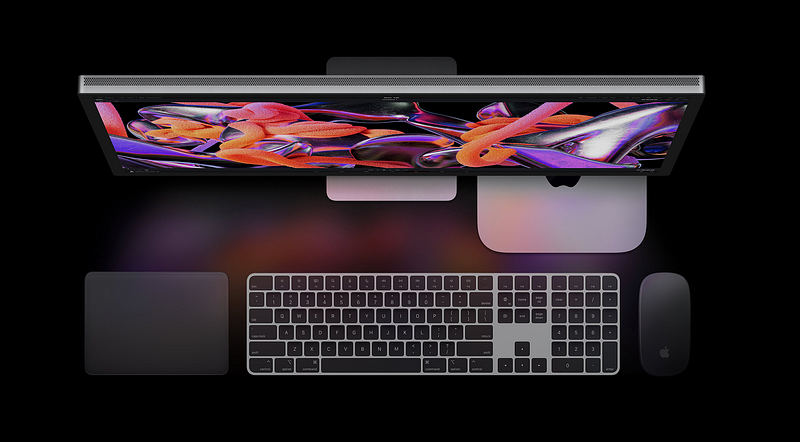
Source: Apple | The base Mac mini now has a lower price point, encouraging upgrades!
The new MacBook Pros and Mac mini also support multichannel audio output via HDMI, a feature missing in previous generations.
Section 1.3: Exploring Wi-Fi 6E
What does Wi-Fi 6E offer for your Mac? First, this upgrade is irrelevant if you’re using an outdated router. For instance, I still use an Apple Airport Extreme with Wi-Fi 5, which lacks the security and speed of Wi-Fi 6E with WPA3.
Wi-Fi 6E provides significantly faster speeds, with a maximum throughput of 9.6 GB compared to Wi-Fi 5’s 3.5 GB. A major advantage of Wi-Fi 6E is its ability to connect to a 6 GHz frequency band, allowing devices to bypass the overcrowded 2.4 GHz and 5 GHz bands.
Imagine driving on a freeway choked with traffic; Wi-Fi 6E is like having access to the carpool lane, enabling you to reach your destination more quickly and efficiently.

Source: Apple | Are you still backing up with Time Machine over Wi-Fi?
While not every environment supports Wi-Fi 6E, upgrading your router will ensure your Mac connects at optimal speeds. As our homes become filled with multiple devices, knowing that your Mac will connect via the fastest and most secure method is invaluable.
Are you considering purchasing a new MacBook Pro or Mac mini? Do these hardware updates motivate you to upgrade other devices at home, like new AirPods or a better router? Personally, I'm planning to get a new router, but the thought of reconnecting nearly 20 devices is daunting. Nonetheless, I believe it will be worth the effort.
If you appreciate my writing, be prepared for more insightful content from other talented writers on Medium. I recently invested in a membership, and I recommend you do the same!
And for more content like this, check out my YouTube channel dedicated to all things related to Apple Tech, Filmmaking, and Final Cut Pro:
Matthew O’Brien
Final Cut Pro Tips, Tricks & Tutorials, Camera & Film Gear Reviews, Post-Production Workflows & Data Management Insights…